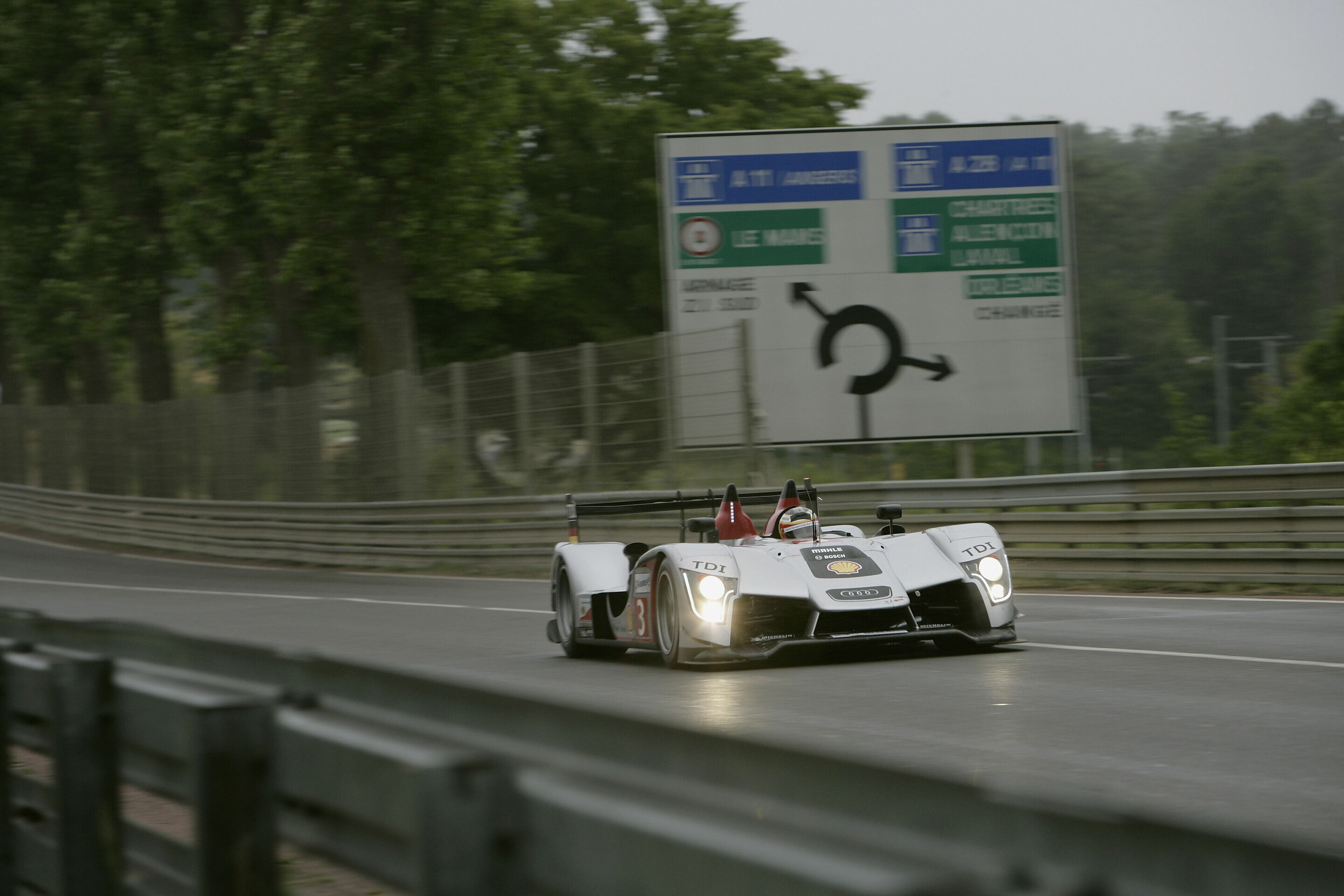Romain Dumas about Le Mans and the Audi R15 TDI
- Various key sections in wet and dry conditions
- TDI Power opens new overtaking possibilities
- Adaptation to two different types of asphalt
Romain Dumas contests the 24 Hours of Le Mans since 2001. On June 13 and 14 the Frenchman experiences a premiere in his ninth race: Dumas tackles the track for the first time in a diesel prototype on the Le Mans début of the Audi R15 TDI. In the interview the 31-year old Frenchman explains to what extent he must relearn the 13.629-kilometer track in the Audi and what is important.
You drove for the first time at Le Mans with a diesel prototype in free practice. How did the encounter go?
Romain Dumas: “Everything ran very well, even though the conditions in the rain weren’t exactly easy. My first laps were not bad. The goal was obviously to learn the track in this car without making any mistakes, like a spin for example, in the process.”
Which corners are the key to a good lap time?
“Braking for the chicanes on the Hunaudières Straight is important – especially in the rain. You can make up time here, but can also make serious mistakes. In the dry the Porsche Curves is one key sector. They are extremely fast, they can make or break your lap time.”
Where are the best overtaking places on this track?
“To answer this question I would again say the braking areas for the chicanes. An ambitious driver can squeeze by on the inside under braking here. Overtaking is therefore very efficient because you lose the least amount of time here.”
The asphalt differs enormously on this combination of temporary and permanent race track. What affect does this have?
“These differences are particularly noticeable when grip level is low, so in the rain. The grip is very good on the permanent Circuit Bugatti, a part of which we use. As soon as you drive out onto the Hunaudières Straight it gets much more slippery. In principle you must prepare yourself for the two different situations.”
How do you find the right braking point in the night on this high-speed track where average lap speeds of more than 230 kph are possible?
“That’s difficult everywhere. It’s particularly difficult to find the ideal braking point for the chicanes on the long straight because you approach at more than 300 kph. The reference points change between day and night. During the day you see the markings, in the dark no more. You have to look for new reference points. On the first laps in the dark it feels as if you are going much quicker! You have to get accustomed to this very quickly at the beginning.”
The TDI engine produces much more torque than a gasoline powered engine. What does this mean at Le Mans?
“With the Audi R15 TDI I can overtake other cars at parts of the track where I was overtaken myself in previous years with a gasoline powered prototype ... It is impressive just how fast the car is on the straight. You really have to get used to this. At the same time I have to fundamentally adapt my driving style: The diesel produces almost no noise, its drag torque is completely different than that of a gasoline engine – it’s not so easy to adapt to this. Luckily the engineers have developed a sensational traction control. In spite of the massive torque you can easily modulate the power on the exit of the corners. This gives you a lot of confidence.”
